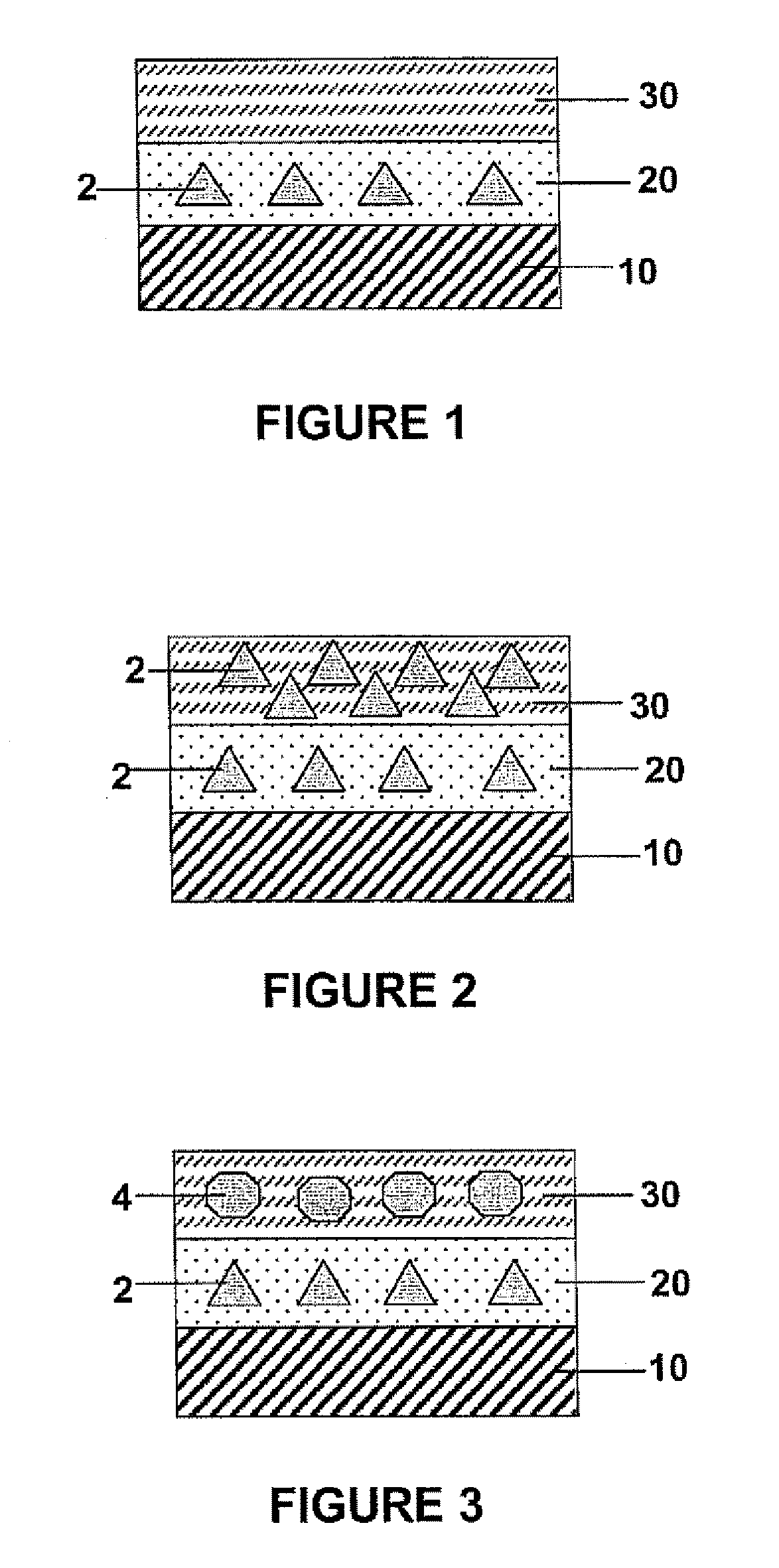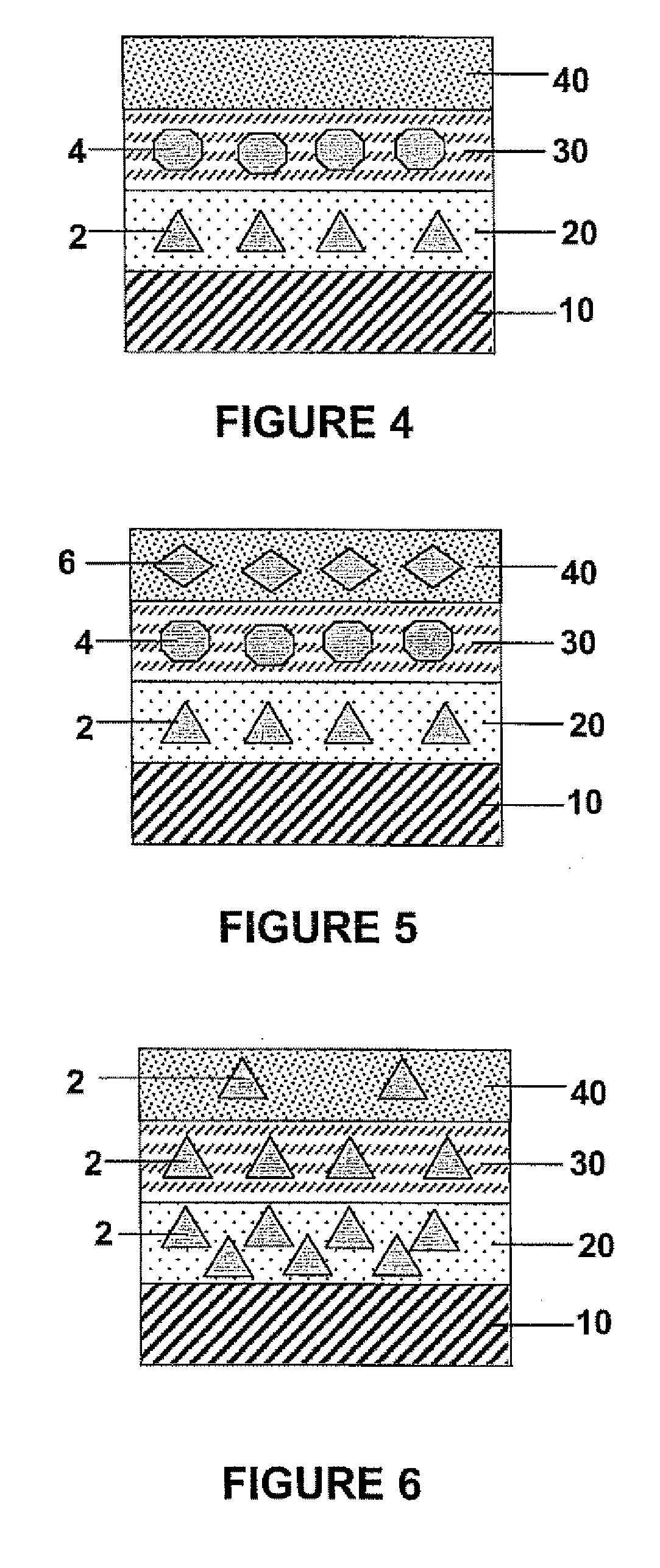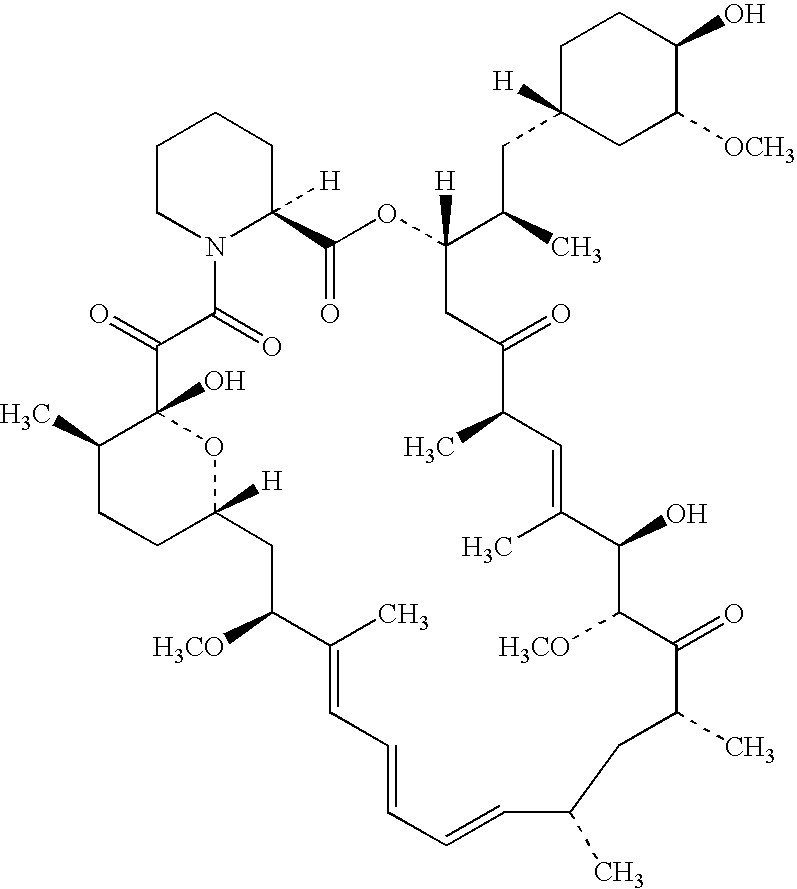Drug-eluting articles with improved drug release profiles
- Summary
- Abstract
- Description
- Claims
- Application Information
AI Technical Summary
Benefits of technology
Problems solved by technology
Method used
Image
Examples
example 1
[0058]FIG. 1 shows a partial cross-sectiorial view of a drug-eluting article with two polymeric coating layers, according to one embodiment of the present invention. Specifically, the drug-eluting article contains a substrate 10, over which two polymeric layers 20 and 30 are formed. The inner polymeric layer 20 comprises a first biocompatible polymer, while a first pharmacologically active compound 2 is encapsulated in the first biocompatible polymer. The outer polymeric layer 30 comprises a second biocompatible polymer, and is essentially free of any pharmacologically active compound.
[0059] The first and second biocompatible polymers may be the same type of polymers, or they can be different, provided that the second biocompatible polymer has a higher degradability than the first polymer. For example, the first biocompatible polymer can be biostable, while the second polymer is biodegradable. Alternatively, both the first and second biocompatible polymers can be biodegradable, pro...
example 2
[0060]FIG. 2 shows a partial cross-sectional view of a drug-eluting article, which is the same as that shown by FIG. 1, except that the second polymeric layer 30 in FIG. 2 also contains the pharmacologically active compound 2, but at a higher concentration than the first polymeric layer 20. Alternatively, the second polymeric layer 30 may contain the pharmacologically active compound 2 at a lower concentration than the first polymeric layer 20.
example 3
[0061]FIG. 3 shows a partial cross-sectional view of a drug-eluting article, which is the same as that shown by FIG. 1, except that the second polymeric layer 30 in FIG. 2 contains a pharmacologically active compound 4, which is different from the pharmacologically active compound 2. Preferably, but not necessarily, the first pharmacologically active compound 2 is an anti-restenotic compound, and the second pharmacologically active compound 4 is an anti-thrombotic or anti-inflammatory compound.
[0062] Further, the first and second polymeric layers 20 and 30 may both contain the pharmacologically active compounds 2 and 4, but at different concentrations. In this manner, the release profiles of the pharmacologically active compounds 2 and 4 can be independently adjusted to achieve optimal delivery of both compounds in a time-dependent manner.
PUM
| Property | Measurement | Unit |
|---|---|---|
| Weight | aaaaa | aaaaa |
| Concentration | aaaaa | aaaaa |
| Molecular weight | aaaaa | aaaaa |
Abstract
Description
Claims
Application Information
 Login to View More
Login to View More - Generate Ideas
- Intellectual Property
- Life Sciences
- Materials
- Tech Scout
- Unparalleled Data Quality
- Higher Quality Content
- 60% Fewer Hallucinations
Browse by: Latest US Patents, China's latest patents, Technical Efficacy Thesaurus, Application Domain, Technology Topic, Popular Technical Reports.
© 2025 PatSnap. All rights reserved.Legal|Privacy policy|Modern Slavery Act Transparency Statement|Sitemap|About US| Contact US: help@patsnap.com



